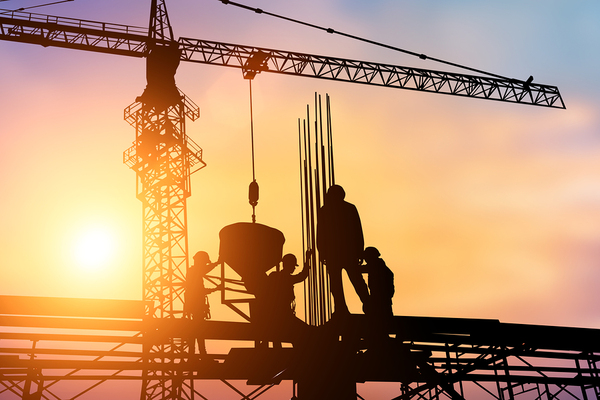The construction industry is one of the cornerstones of employment in the Philippines. Anywhere you go in the country, construction activities are going on- whether it be high-rise buildings, shopping malls, new factories, roads and bridges, and even power plants. These activities are not done and can not be done without the use of big lifting equipment like cranes. As heavy-duty machinery, it is capable of moving extremely heavy loads and equipment from one location to another in a safe and precise manner. They generally fall into eight general categories: gantry, jib, bridge. workstation, monorail, top-running, and under-running. But whatever the type, those working with, around and under them should be aware of the three major categories of hazards posed by this machinery. They are:
1. Electrical hazards from electrical lines and other power sources;
2. Overloading a crane lift; and
3. Falling materials.
Of the three hazards, this article will focus on the third type-falling materials
Common Causes of Falling Materials Accidents
Remember the Nov 2020 accident when a falling girder fell and struck motorists causing the death of one along with a Skyway Project in Mandaluyong? The crane was being positioned for its next task when it struck the girder. That is just one example of what can happen with a falling material involving a crane.
But data from the USA’s Occupational Safety and Health Administration (OSHA) indicates that about four out of every five overhead crane accidents can be attributed to human error. Some of them lead to the deaths of people who were struck or crushed by falling objects that were supposed to be secured on the crane’s lift, as was the example cited above.
Some of the most frequently reported causes of falling materials accidents include:
- Visual impairment, where the operator cannot see the lift load at all times
- Two-blocking, when a hook block, overhaul ball, or similar component contacts the boom tip, which increases hoist rope tension
- Mechanical failure, when one or more components of the lift and/or crane fail while a load is being hoisted
- Operator incompetency, when a crane’s operator is unfamiliar with the type of crane being operated or the proper hoisting protocols
What Can be Done?
First, loads must be properly secured to prevent materials it is lifting to fall off. When the load, sling, or other attachments are not correctly secured, the load can tip or swing, thereby causing materials to slide off and plunge to the ground below.
Second, it is essential that regular crane maintenance is performed to minimize the risk of falling materials accidents. Best practice requires that daily crane inspections be done before operators can begin their work. Load test maintenance and periodic inspection of integral and load-bearing parts are also important aspects of preventing mechanical failure.
Thirdly, remove the possibility of human error. This means that crane operators themselves must be adequately trained and appropriately qualified on the piece of equipment that they are controlling. Think of other safety training aside from the TESDA NC-II certification. This is especially true with regard to the crane’s movements; if they are too fast, sudden, or jerky, the load could dislodge and spill onto the ground. Also, crane operators must devote all of their focus to the job at hand and eliminate all other distractions.
Finally, other construction workers should be aware of ongoing overhead crane operations. This means heeding “Hoist Danger” warning signs and physical barriers when moving around the site and also refraining from walking underneath a suspended load. And of course, these workers should always wear the mandated personal protection equipment to safeguard their head, feet, eyes, and hands. The visibility vests most especially can catch the attention of the operator or his signaler.

Should the need arise to halt hoisting operations before they are completed, certain safety measures must be observed. The crane operator should never leave his post while a load is suspended above the ground. Similarly, all lockout/tagout procedures should be followed to ensure that a crane is not restarted or moved until the proper repairs are made, or precautions are taken.
In addition to the potential for injury or death, falling materials accidents can cause quite a bit of damage to materials, other equipment, or the site itself; and they tend to lead to substantial delays in construction schedules. The best way to prevent this type of overhead crane accident is to “stop it before it starts” by observing all relevant safety regulations, embracing best practices for crane operation, and using a healthy dose of common sense
https://newsinfo.inquirer.net/1363277/1-dead-4-injured-as-skyway-steel-girder-collapses-falls-on-vehicles-in-muntinlupa-2

